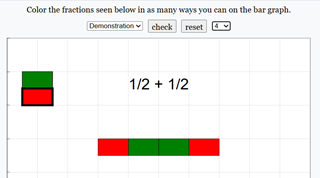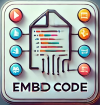Credits
['kangRui', 'meiYoke', 'looKang']
Exploring Fractions with xAPI-Enabled Interactive Learning
Introduction
Fractions are often a stumbling block for learners in mathematics. Many students can memorize rules, but true understanding comes only when they can visualize, manipulate, and experiment with fractions in different contexts. To support this, we’ve developed an xAPI-enabled Fraction Interactive—a digital tool that blends visual learning, interactivity, and learning analytics into a single experience.
What Makes This Interactive Special?
1. Visual Fraction Representation
Students can dynamically split shapes (circles, rectangles, etc.) into equal parts, color sections, and immediately see fractions come alive. This visual connection bridges the gap between abstract numbers and real-world meaning.
2. Hands-On Experimentation
Instead of passively reading or watching, learners directly manipulate fractions. They can:
-
Adjust numerators and denominators.
-
Compare different fractions side by side.
-
Observe many ways for fractions to be added (e.g., 1/2 + 1/2 = 2/2) in many possible ways.
webejs_model_Math_Fractions_xAPI_v5.zip -
Experiment with improper fractions and mixed numbers.
This active exploration deepens conceptual understanding.
3. xAPI-Enabled Learning Analytics
Unlike static worksheets, this interactive is fully xAPI-compliant. That means every key action a learner takes—such as creating a fraction, submitting an answer, or adjusting values—can be recorded in the Learning Record Store (LRS) or the Student Learning Space (SLS). Teachers gain insights into:
-
Which fractions students struggled with.
-
How many attempts were made before arriving at a correct answer.
-
Patterns of misconception (e.g., confusing numerator with denominator).
This makes assessment not just about the “final answer,” but about the learning journey.
Pedagogical Value
-
Supports Inquiry-Based Learning
Teachers can pose open-ended questions like Task A and let students explore directly in the interactive.
-
Fosters Metacognition
With immediate feedback and data tracking, learners reflect on their mistakes and refine their strategies—key elements of mathematical thinking. -
Differentiation Made Easy
Since every interaction is logged, teachers can personalize follow-up activities. For instance, one group may need reinforcement on equivalent fractions, while another may be ready to tackle word problems involving mixed numbers.
Alignment with MOE’s e-Pedagogy Framework
This interactive supports:
-
Assessment for Learning (AfL): Teachers get real-time analytics of students’ thought processes.
-
Conceptual Change: By allowing learners to test and revise their understanding, misconceptions can be surfaced and corrected.
-
Differentiation: Data-driven insights allow targeted interventions for diverse learners.
Why xAPI Matters for Mathematics
The real breakthrough here is the integration of xAPI (Experience API). Traditional worksheets and even some digital games can’t provide teachers with detailed evidence of how students learn. With xAPI, however, we can capture fine-grained data such as:
-
“Student split the rectangle into 5 parts but shaded 3, labeling it incorrectly as 3/5 instead of 2/5.”
-
“Student adjusted numerator multiple times before finalizing answer.”
Such rich data goes beyond correctness—it uncovers reasoning, persistence, and strategies.
Conclusion
The xAPI-enabled Fraction Interactive isn’t just another math app—it’s a step forward in blending pedagogy, technology, and analytics. By making fractions visual, interactive, and data-rich, we can better support students in developing true mathematical understanding while empowering teachers with actionable insights.
With tools like this, learning fractions can shift from rote memorization to meaningful exploration—one fraction at a time.
- Details
- Written by Loo Kang Wee
- Parent Category: Fractions
- Category: 1. Fractions of a Whole
- Hits: 631












